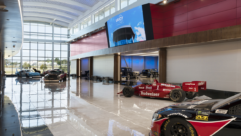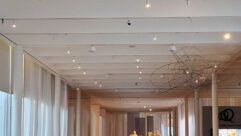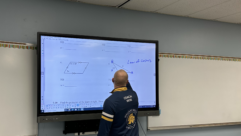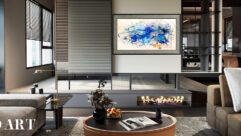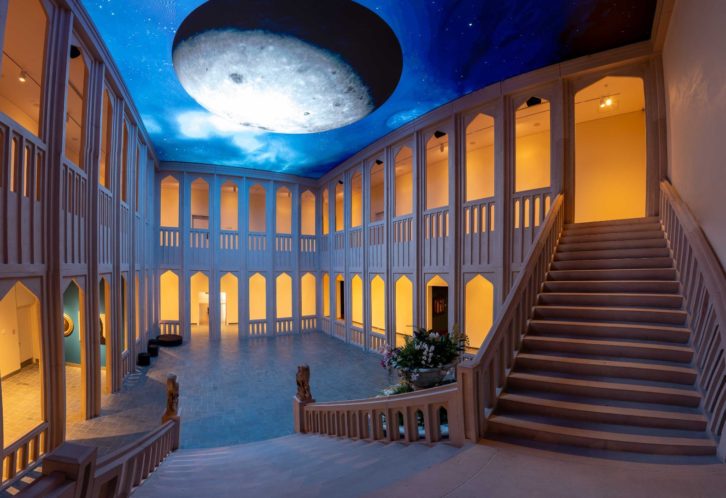
When a permanent video feature goes into a museum’s architecture it can become a signature element, one that guests remember and associate with the museum for decades. For the brand-new Clowes Pavilion at the Indianapolis Museum of Art, the new iconic image is an 11,500 pound, 47 by 31-foot 522-panel LED ceiling at the center of a medieval cloister inspired courtyard. The state-of-the-art ceiling is all the more striking as it defines the heart of a gallery devoted to centuries-old paintings.
The Clowes Pavilion was designed with the modern museum guest in mind and the result is “truly magical, it doesn’t look or feel like any other gallery space. When you walk in you feel like you’ve discovered something special,” said Tascha Horowitz, Director of Interpretation, Media, and Publishing at Newfields, who oversaw the ceiling project, along with other interactive elements in the Clowes Pavilion.
“Research shows that guest satisfaction rises significantly when museums update architecture, change the way art is presented, and incorporate truly innovative technology throughout gallery spaces,” shared Katie Haigh, Chief Operating Officer at Newfields, and who oversaw the renovation. “From the beginning, we asked ourselves, beyond great art, what drives guests to a gallery, and what makes them stay?”
For the Clowes Pavilion “sky” Kevin Winkler and his team from Blockhouse Studios shot unique scenes of art and nature—a beautiful arching beech tree as an overhead canopy, a starry sky, and a spectacular moon, courtesy of NASA. Other scenes include abstract interpretations of brushstrokes from paintings in the Clowes Collection. The content rotates every 20 minutes on a 60-minute loop and is accompanied by a soundtrack of pleasant background music.
The Newfields team, led by Haigh, included Mike Griffey, Director of Collection Support and Construction Services and Horowitz, who worked hand-in-hand with The Clowes Fund and the Allen Whitehill Clowes Charitable Foundation for many years to refine the design that could bring the content to life. “It was a process of trial and error. We went through many iterations. At one point we were going to cover the ceiling with a membrane that would be projected from behind,” recalled Haigh. “It wasn’t until we found Blockhouse Studios that we understood what was actually technologically possible.”
Winkler proposed LED screens over projection for this space. “I just knew it had to be LED,” he said. But what you are seeing in the Clowes Pavilion isn’t your everyday LED billboard or jumbotron. “To get ahead of this technology, we doubled the pixel density people are used to seeing, so now, your eyes can’t distinguish little dots. It looks real—really sharp, extra clear, vivid images that aren’t going to look dated in a few years.”
The ceiling was designed, sourced, and installed by a team of talented local vendors: Blockhouse Studios, Tyler Truss, Neoti and Dodd Technologies, guided by Newfields’ team of interpretation specialists, designers, conservators, curators and facilities teams.


